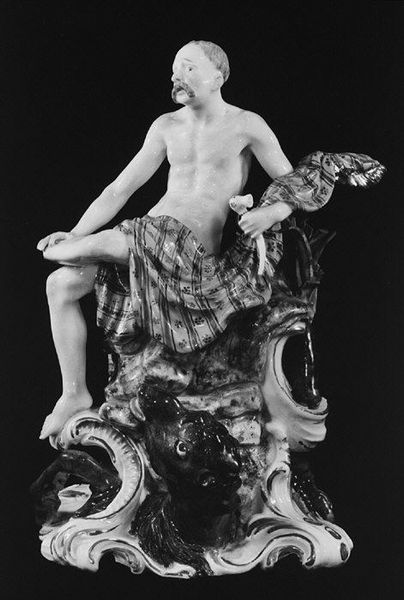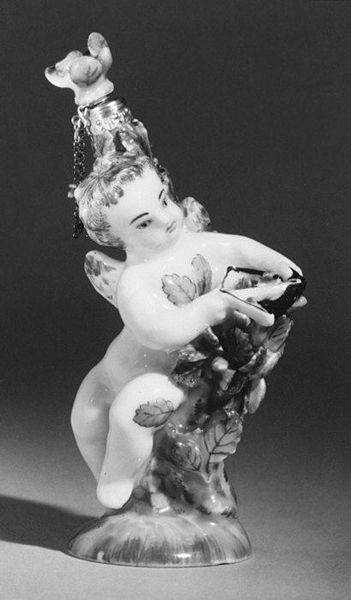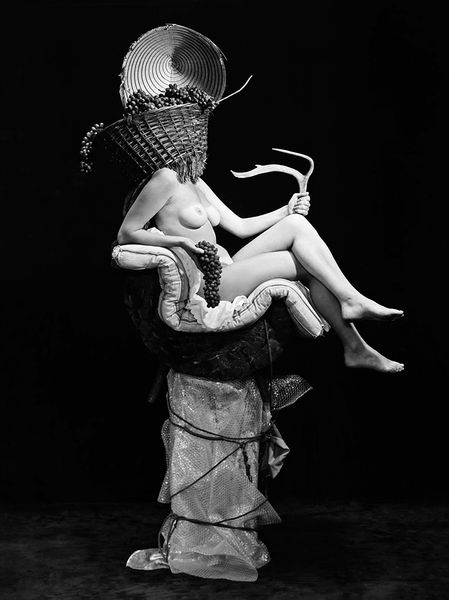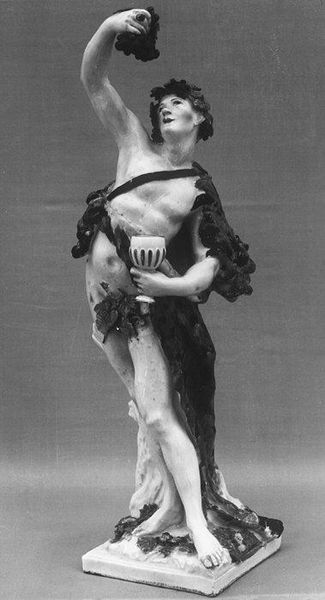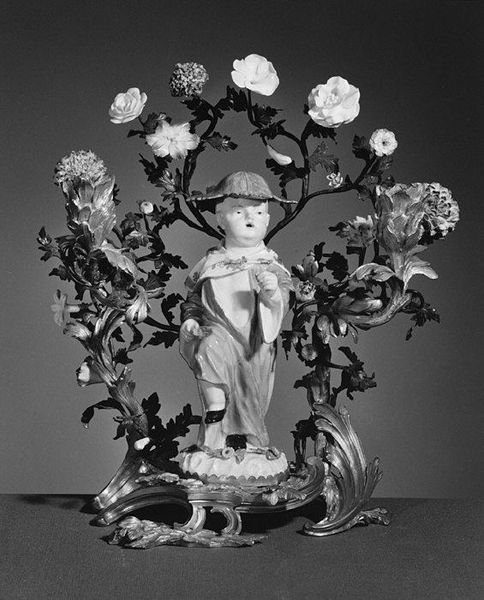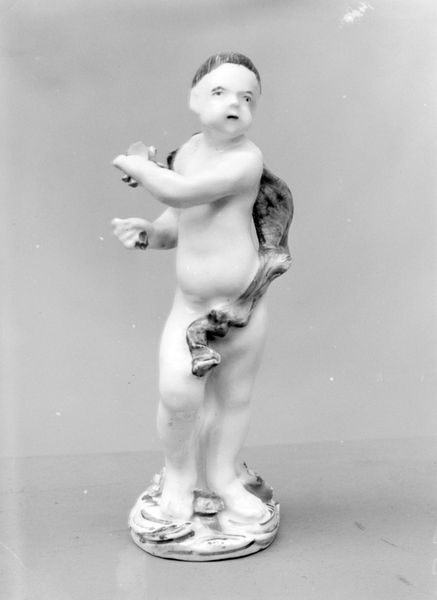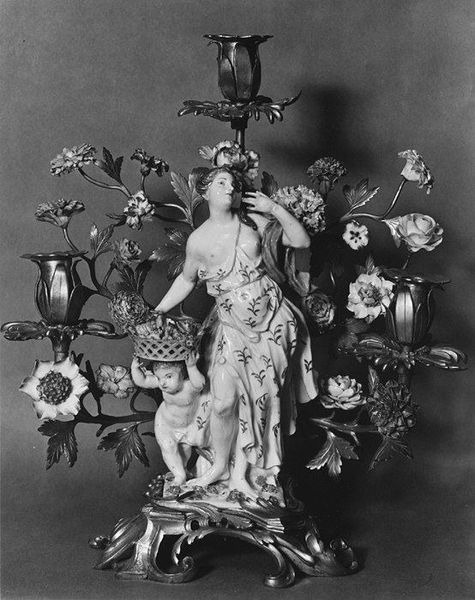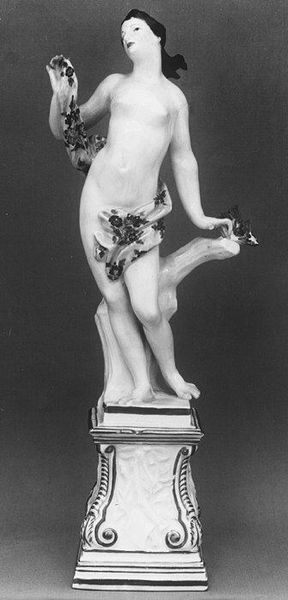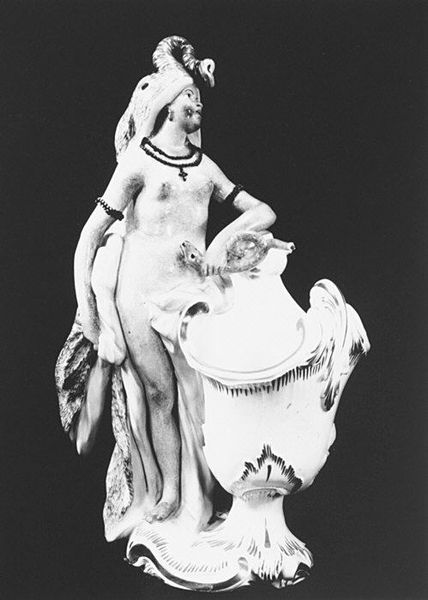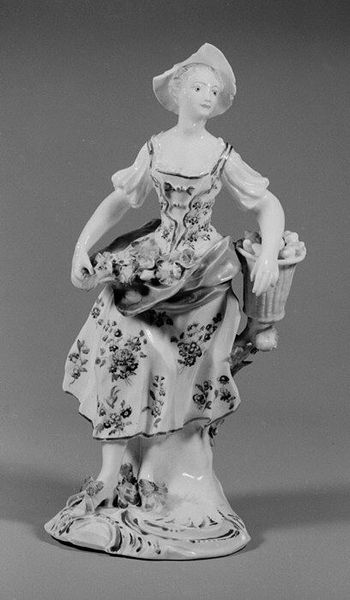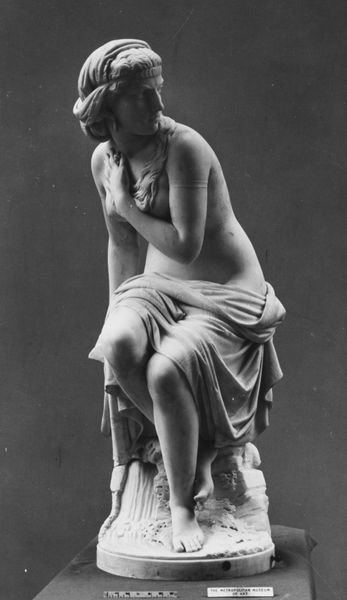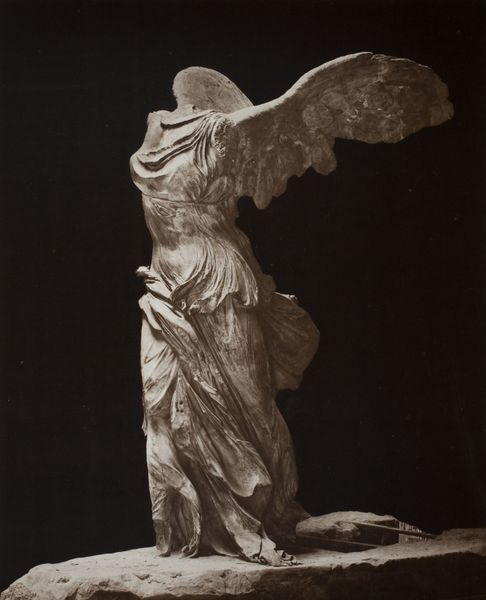
ceramic, porcelain, sculpture
#
sculpture
#
ceramic
#
porcelain
#
sculpture
#
decorative-art
#
nude
#
rococo
Dimensions: 9 × 6 1/2 in. (22.9 × 16.5 cm)
Copyright: Public Domain
Curator: Before us stands a porcelain teapot crafted by the Meissen Manufactory between 1737 and 1741. Editor: It’s striking! The combination of the child figure and the swan immediately brings to mind Leda, but the tension is completely absent. The smooth white of the porcelain gives it a delicate, almost ethereal quality. Curator: That’s interesting. The Rococo period saw an explosion of decorative arts designed to signal wealth and taste, but also perhaps an unacknowledged gender performance of wealth through hyper-feminine and playful extravagance, which some suggest was often steeped in gender and sexual anxiety. Editor: Indeed, and porcelain was an ideal medium to support such fantasies. We must also note the intense manual labor needed for each porcelain object: from the kaolin mines where the raw material was extracted, to the glass kilns used to stoke and control the intense firing that brought luster to these precious goods. This form of production allowed porcelain to reach Europe during the Ming Dynasty and transformed how high society lived and viewed aesthetics. Curator: And think of the visual language! The Rococo style aimed for lightness, elegance, and a rejection of rigid forms—often coded in an appeal to the feminine and the artificial. Swans had long carried their own heavy symbolic load. Leda of course, but even before that in classical writing where they signify grace and natural beauty. The intersection of classical myth and idealized European childhood, both undergird the structures of early-modern colonial society, the sexualized female figure and desexualized masculine power in a kind of complex visual grammar that spoke specifically to the elite consumer. Editor: Absolutely. The context of labor within a budding global market adds to the richness of understanding its function and its symbolic status in Europe at the time. Curator: Considering both the social and material forces shaping its production and reception deepens our understanding of objects like this. Editor: Right, it allows us to question both aesthetics and class in relation to artistic forms.
Comments
No comments
Be the first to comment and join the conversation on the ultimate creative platform.
